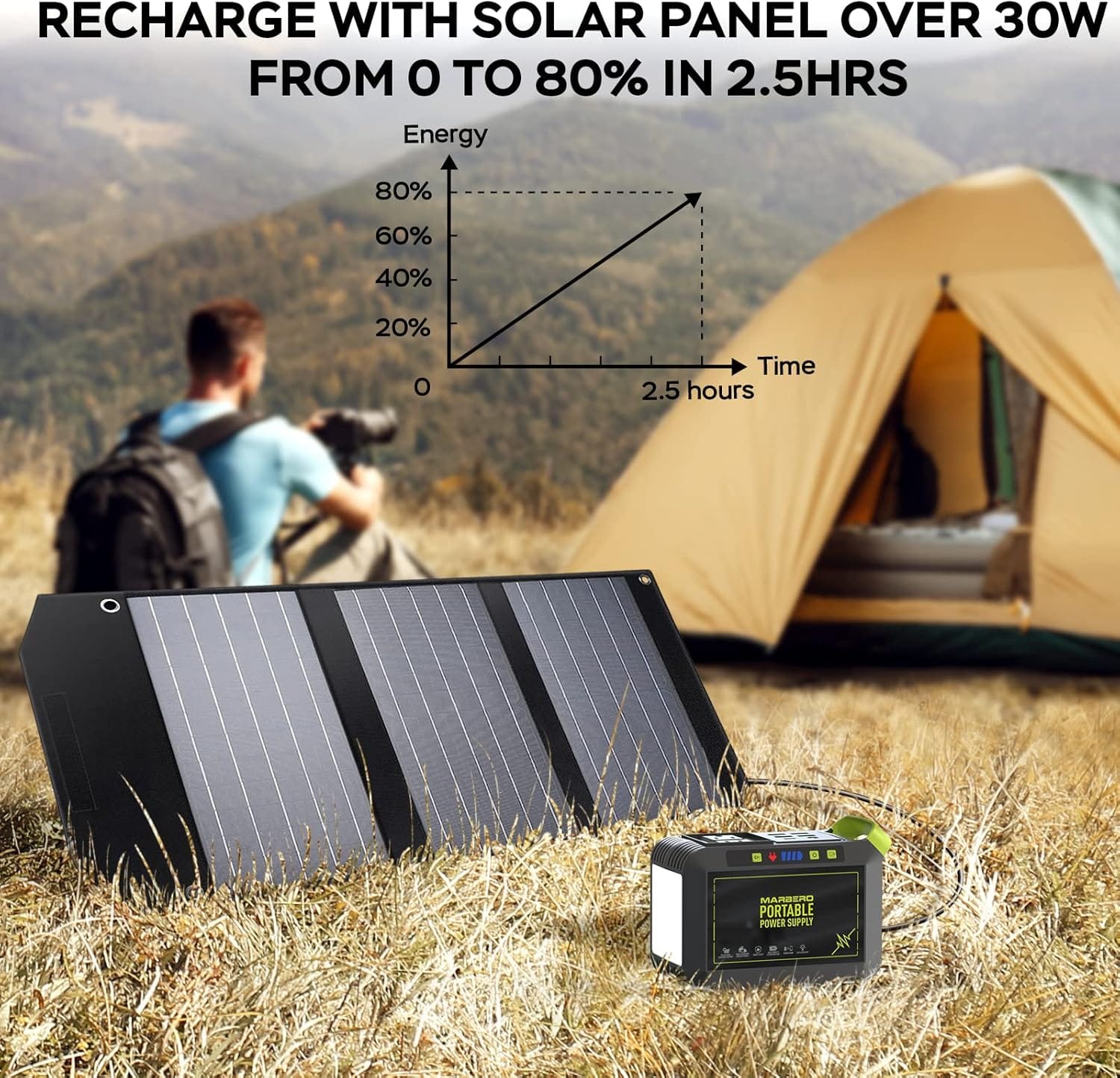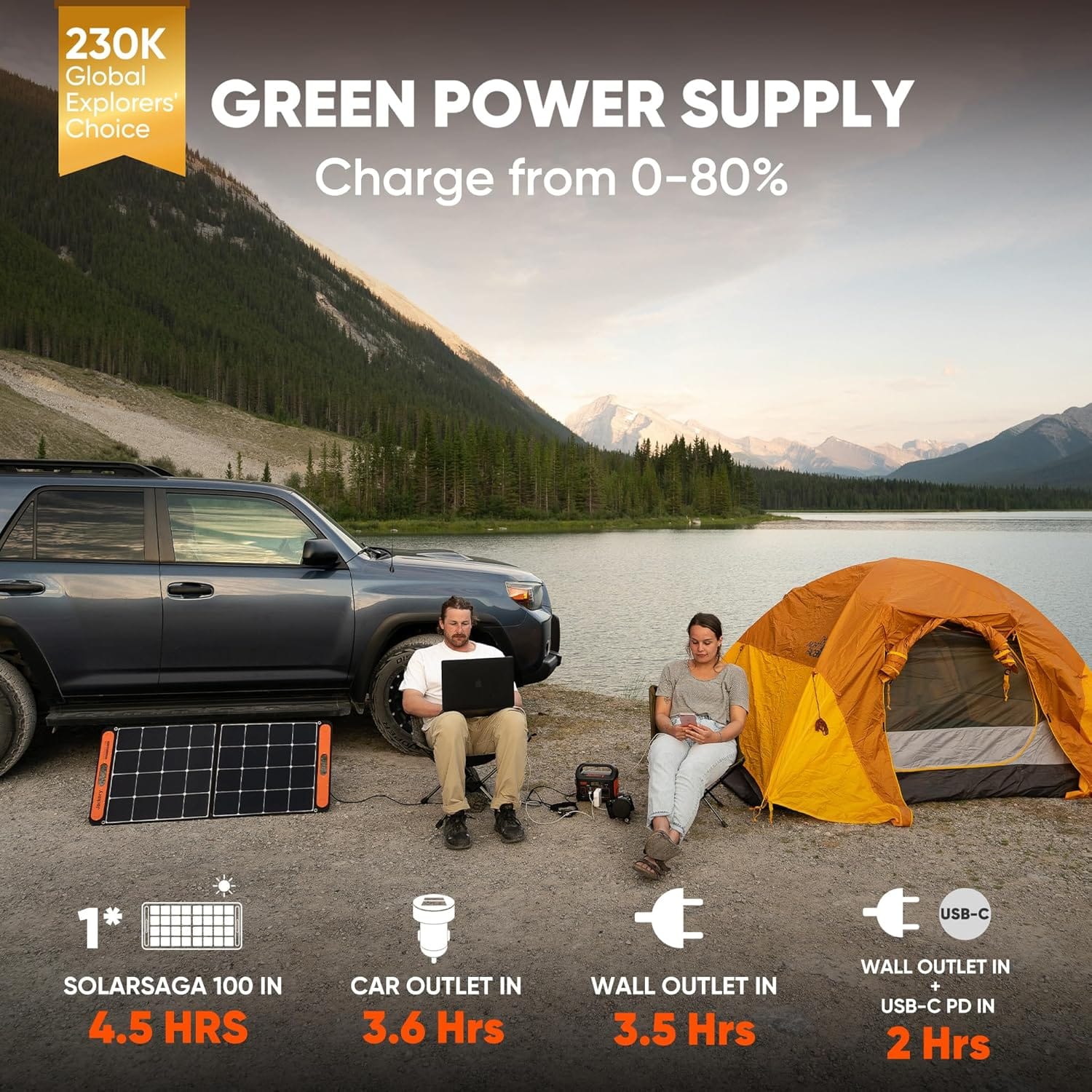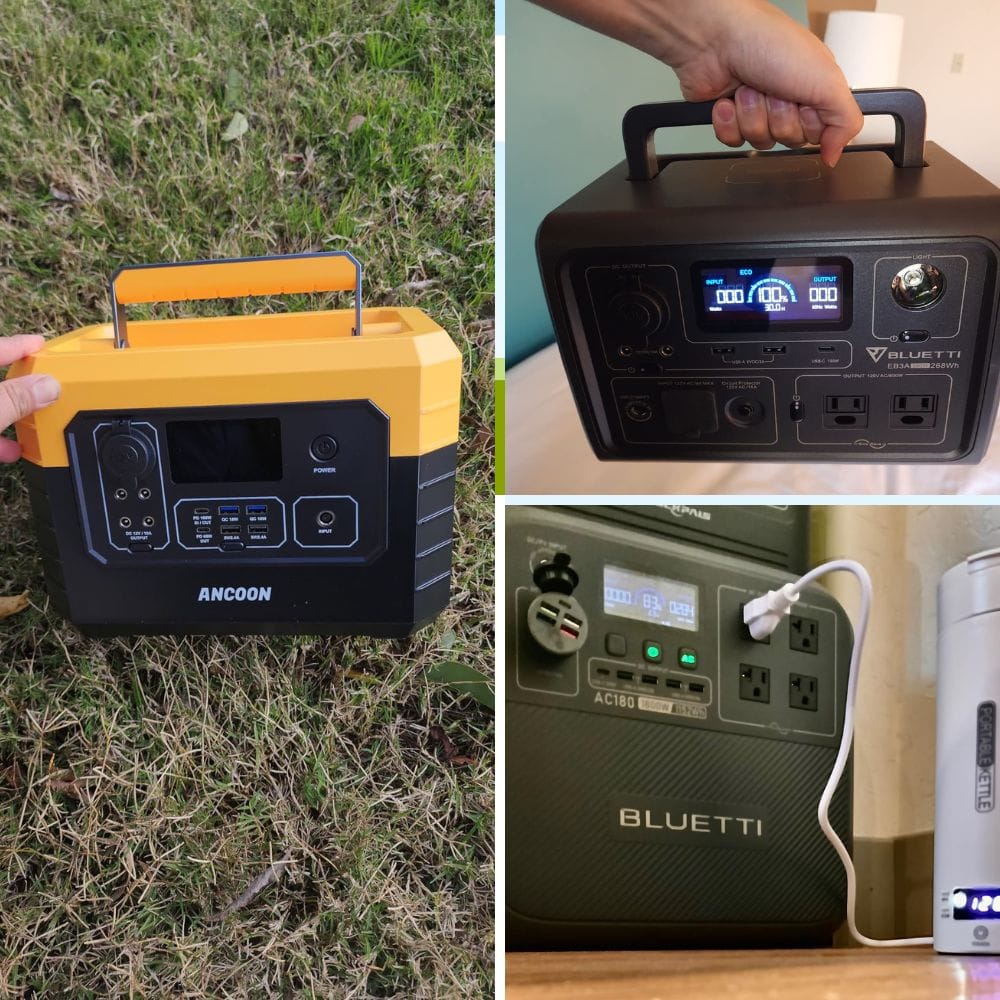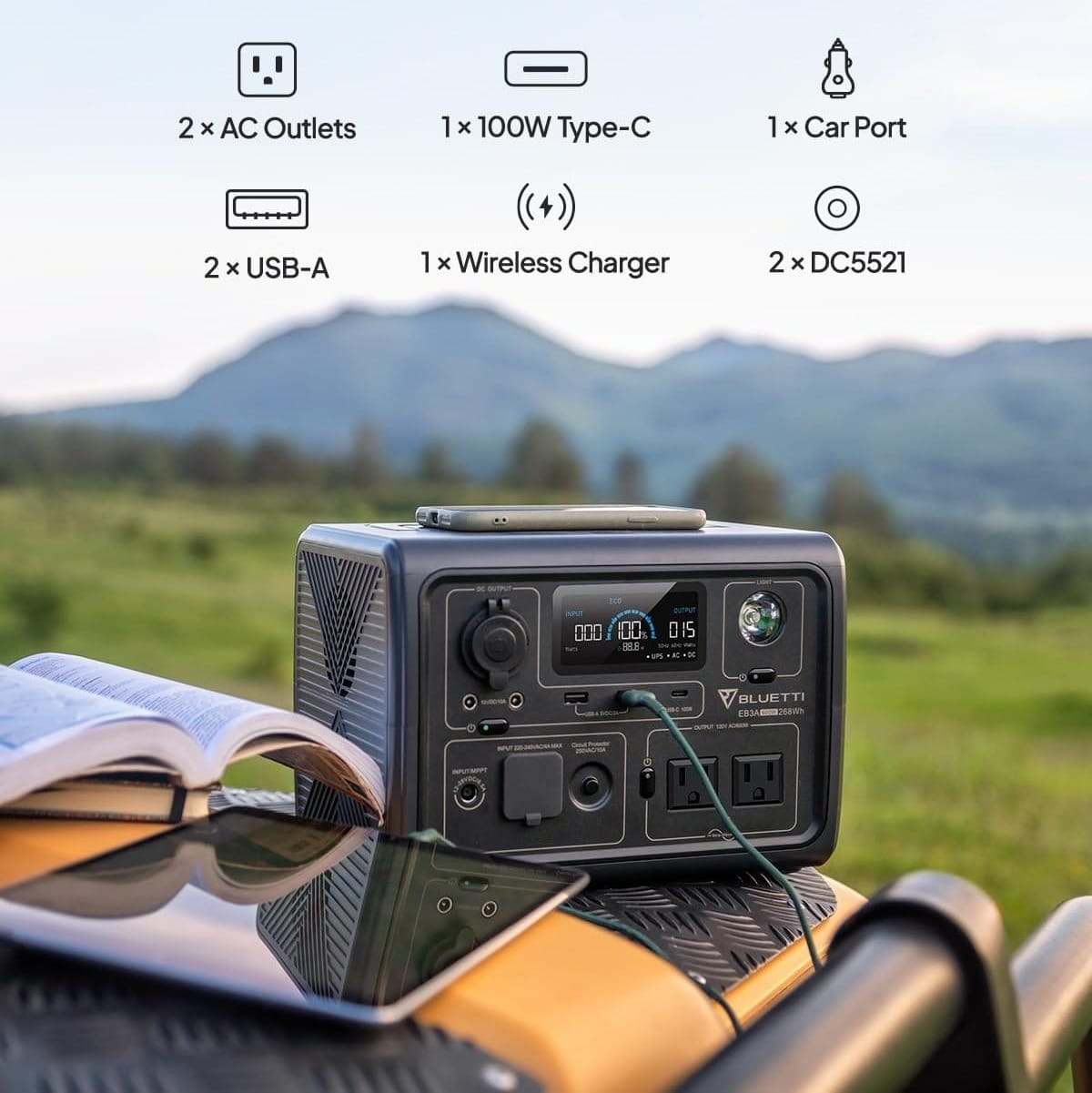Key Takeaways:
- Understand the safety implications of leaving a portable power station plugged in.
- Learn about the impact on battery life and performance.
- Discover best practices for maintaining your portable power station.
Introduction to Portable Power Stations

Portable power stations have become a staple for outdoor enthusiasts and emergency preparedness alike. These devices offer a convenient way to power electronics when you're off the grid. But a common question arises: can you leave a portable power station plugged in? Understanding the nuances of this question is crucial for both the safety and longevity of the device.
Portable power stations are essentially large batteries with multiple outlets, designed to provide power on the go. They are versatile, allowing you to charge everything from smartphones to small appliances. However, like any electronic device, they come with their own set of guidelines and best practices.
The Basics of Charging Portable Power Stations
Charging a portable power station is straightforward, but there are important considerations to keep in mind. Most units can be charged via a wall outlet, solar panels, or even a car charger. The method you choose can affect the charging time and efficiency.
Leaving a power station plugged in continuously might seem convenient, but it can lead to overcharging. Overcharging can degrade the battery over time, reducing its capacity and lifespan. Therefore, understanding the charging process and the manufacturer's recommendations is essential.
Safety Concerns: Overcharging and Heat
One of the primary concerns with leaving a portable power station plugged in is the risk of overcharging. Overcharging can generate excess heat, which may damage the battery or even pose a fire hazard. Most modern power stations come equipped with built-in safety features to prevent overcharging, but it's still wise to unplug the device once it's fully charged.
Heat is another factor to consider. Batteries naturally generate heat during charging, and excessive heat can accelerate wear and tear. To mitigate this, ensure your power station is in a well-ventilated area and avoid charging it in direct sunlight or near heat sources.
Impact on Battery Life
Battery life is a critical aspect of any portable power station. Leaving the device plugged in continuously can lead to a phenomenon known as "trickle charging," where the battery is kept at full charge. While this might sound beneficial, it can actually shorten the battery's lifespan.
Lithium-ion batteries, commonly used in portable power stations, perform best when they are not kept at full charge for extended periods. To maximize battery life, it's advisable to charge the device to around 80% and then unplug it. This practice helps maintain the battery's health over time.
Manufacturer Guidelines and Recommendations
Each portable power station comes with specific guidelines from the manufacturer. These guidelines are designed to ensure optimal performance and safety. It's crucial to read and follow these instructions carefully.
Manufacturers often provide details on the ideal charging cycles, storage conditions, and maintenance tips. Adhering to these recommendations can prevent potential issues and extend the life of your power station.
The Role of Built-In Safety Features

Modern portable power stations are equipped with a variety of safety features to protect against overcharging, overheating, and short circuits. These features include automatic shut-off mechanisms, temperature sensors, and surge protectors.
While these safety features provide peace of mind, they are not foolproof. Regularly inspecting your power station for any signs of wear or damage is a good practice. If you notice anything unusual, it's best to consult the manufacturer or a professional.
Best Practices for Charging
To ensure the longevity and safety of your portable power station, follow these best practices. First, avoid leaving the device plugged in for extended periods. Once fully charged, unplug it to prevent overcharging.
Additionally, store your power station in a cool, dry place when not in use. Extreme temperatures can affect battery performance and lifespan. Regularly check the device for any signs of damage or wear, and clean the ports to ensure a good connection.
The Importance of Regular Maintenance
Regular maintenance is key to keeping your portable power station in top condition. This includes cleaning the device, checking for any physical damage, and ensuring the ports are free of debris.
Performing regular maintenance not only extends the life of your power station but also ensures it operates safely and efficiently. Set a schedule for maintenance checks, especially if you use the device frequently.
Understanding Battery Management Systems
Battery management systems (BMS) are integral to the operation of portable power stations. These systems monitor the battery's state, manage charging cycles, and protect against overcharging and overheating.
A well-functioning BMS can significantly enhance the safety and performance of your power station. Familiarize yourself with the BMS features of your device and ensure they are functioning correctly.
Environmental Considerations

Environmental factors can impact the performance and safety of your portable power station. High humidity, extreme temperatures, and exposure to elements can all affect the device.
To mitigate these effects, store your power station in a controlled environment when not in use. If you're using it outdoors, try to keep it sheltered from direct sunlight and rain.
Case Study: Real-World Usage
Consider the case of John, an avid camper who frequently uses his portable power station. Initially, John left his device plugged in continuously, thinking it would be ready whenever he needed it. However, he soon noticed a decline in battery performance.
After researching, John adjusted his charging habits, unplugging the device once it reached 80% charge. He also began storing it in a cool, dry place. These changes significantly improved the battery's lifespan and performance.
Common Misconceptions
There are several misconceptions about portable power stations, particularly regarding charging practices. One common myth is that leaving the device plugged in won't harm the battery. As discussed, this can lead to overcharging and reduced battery life.
Another misconception is that all power stations are the same. In reality, different models have varying features and specifications. Understanding your specific device is crucial for optimal use.


Can I leave my portable power station plugged in overnight?
It's generally not recommended to leave your portable power station plugged in overnight. While many devices have safety features to prevent overcharging, it's best to unplug the device once it's fully charged to preserve battery life.
What happens if I overcharge my portable power station?
Overcharging can lead to excess heat, which may damage the battery and reduce its lifespan. It can also pose a safety risk, potentially leading to battery failure or fire hazards.
How often should I perform maintenance on my portable power station?
Regular maintenance should be performed every few months, or more frequently if you use the device often. This includes cleaning the device, checking for damage, and ensuring the ports are clear of debris.

Portable power stations are invaluable tools for those who need power on the go. However, understanding the intricacies of charging and maintenance is essential for safety and longevity. By following manufacturer guidelines and best practices, you can ensure your power station remains a reliable companion for years to come.











